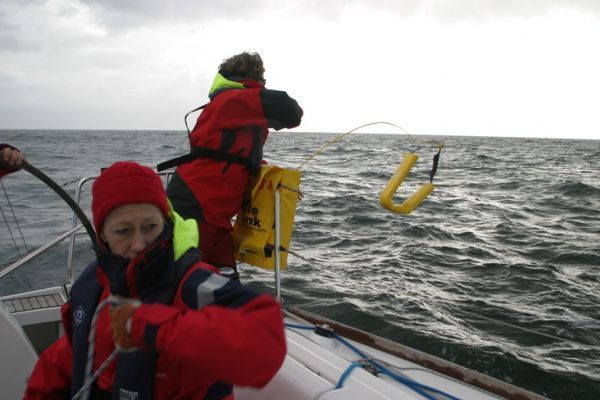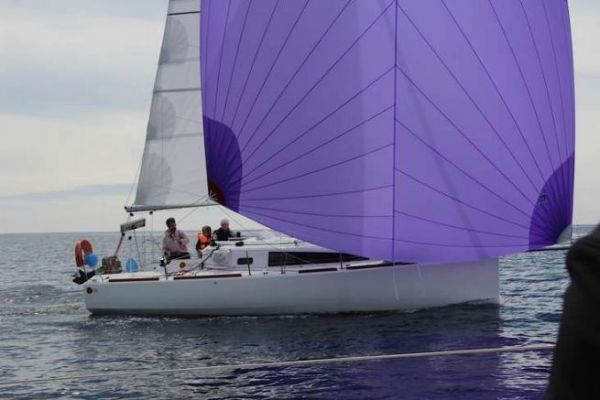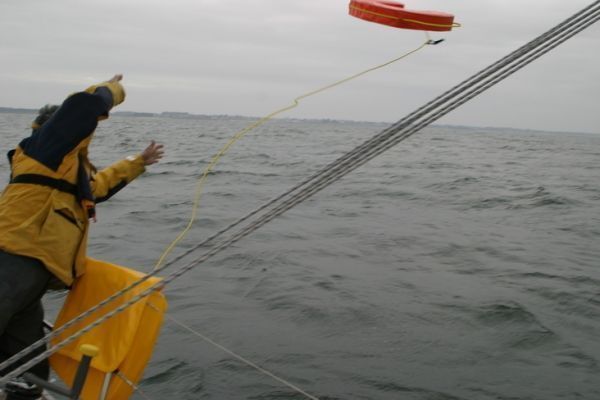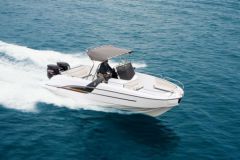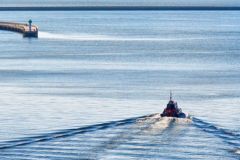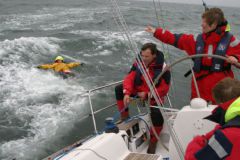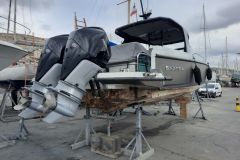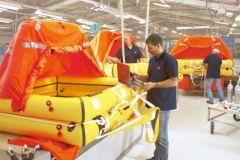The first few seconds are crucial
There is no one universal good Man Overboard or MOB maneuver. There are many ways to approach it, and the procedure will depend on the conditions, the crew and the boat.
However, having the right first reflexes can allow the rest of the crew to approach the maneuver with peace of mind. To succeed in the maneuver, you must prioritize your actions. The first is to always keep the man overboard in sight, and secondly, to try to establish a physical link with him. Now let's put ourselves in a situation!
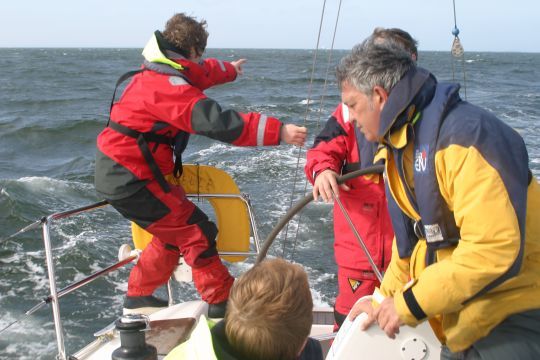
First objective: maintain eye contact
During the day, a person has fallen into the water. Immediately, the crew must be made aware of this and be ready to react with the warning "Man overboard! Ideally, the skipper is in the cockpit, and clearly and quickly distributes the positions.
The first position to be assigned is that of the lookout, i.e., a person who will constantly point out the Man Overboard to help guide the maneuvers. This crew member must be placed in a place where he/she does not disturb the man overboard, while keeping a permanent visual contact with him/her. Some crews will automatically assign this role to the first person to witness the fall.
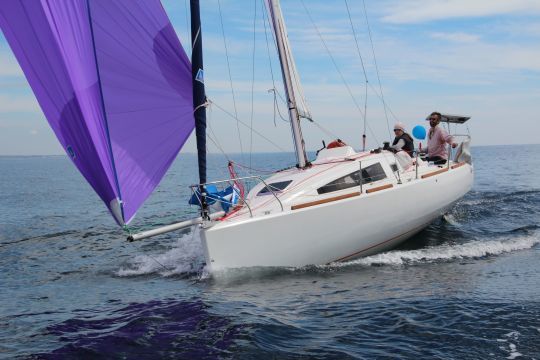
Second objective: to stay close to the man overboard
If the boat moves too far away from the man overboard, the lookout may lose sight of him, even with the best will in the world! In addition, it is important to reassure the person who has fallen overboard. If they don't panic, it's a big plus for the rest of the manoeuvre.
The first idea is to stop the boat. To do this, you can either luff up and face the wind to break your headway, or you can decide to go directly to the cape.
Once the boat is stopped, if you are close enough, you can throw the roll-over light equipped with a halin or a long line. Once physical contact is established, this step can already be considered successful. If you are too far away or if the person is unconscious, you will have to maneuver!
If you can't stop the boat immediately, if you are under spinnaker for example, you must mark out the area as much as possible, throwing everything that can float into the water. It will be easier to find the man overboard afterwards. As a priority, we start with the IOR pole, the lifebuoy and the rollover light.
Prepare for the possibility of failure
Failure to recover a man overboard quickly is quite possible, and the reasons can be many. That is why we will quickly note the GPS position and the time when the incident took place. This data will be very important for the rescue services or simply for the crew if ever visual contact is lost. Obviously, this position does not locate the person at sea, who is drifting. By pressing the "MOB" button on your GPS, it will give you the distance to cover and the course to follow to reach the point recorded.
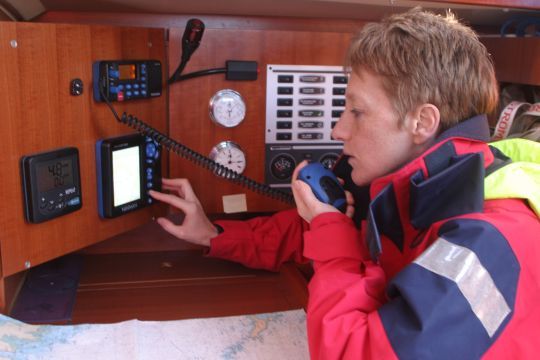
Anticipate the rest of the maneuver
As soon as you can, turn on your engine. It can be a great help when approaching the man overboard. For example, if you are too far into the wind on your approach, it will help bridge the distance that prevents you from making a physical connection. It can also give you the little boost that will ensure that your tack does not become a lack of tacking.
Successfully approaching the man overboard is one thing, retrieving him is another. We have talked a lot about making a physical connection. To do that, you have to have something to do it with. Is your tip in the bottom of your trunk? It needs to be out and ready before you get to the person! Also, it's a good idea to anticipate the castaway's ascent on board and thus have the device at hand.
As soon as the maneuver drags on, or as soon as you have doubts about your ability to recover the man overboard, you must call for help. The colder the water, the shorter the time.
Now, the best thing to do is to practice in as many configurations as possible so that you are ready if this situation ever happens.
